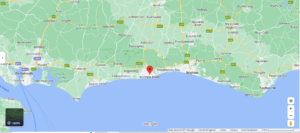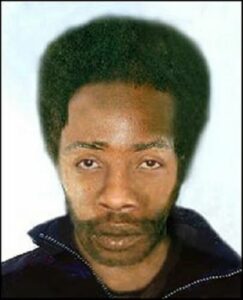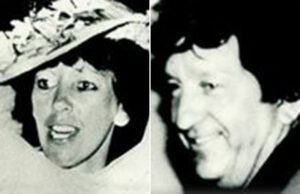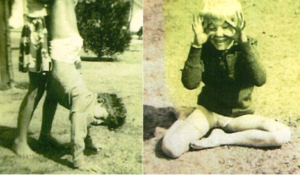Liverpool’s Own Misty Whodunnit: The Wallace Murder
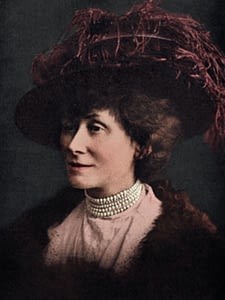
The victim Mrs Julia Wallace
There are certain unsolved killings that seem as if Conan Doyle could have made them up. The Green Bicycle murder and The saga of Lord Lucan are two that spring to mind.
All have complicated aspects that stretch the thinking. All have hints and hunches that can have you circling around various theories without landing on a particular one. Liverpool’s Wallace murder is another mystery in this category.
Liverpool is on England’s north west coast. It was a very influential port right from the 19th century until the 1970s. Like many western cities the last 50 years has seen a downturn in the revenue they reaped from the sea. Not only did the in and out of merchant ships tail off so did Liverpool’s ship building interests.
The entire place owed its marvellous architecture and comparative wealth to the oceans. In 1931 the place was doing quite well for some and for others there was serious poverty. In between these two groups you had the like of Mr and Mrs Wallace. They lived in a terraced house ( townhouse) in Wolverton St, Anfield. These sort of properties can be found all over the UK. They are red brick, small and have neighbours on both sides. You can go through the front door or down an alleyway and in through a yard at the back. Those at Wolverton Street are of the larger variety of this style of house.
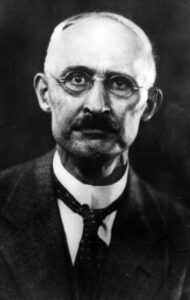
William Herbert Wallace had been born in Cumbria and, once grown, he then travelled a bit for his work. He apprenticed as a drapers assistant and found employment with a colonial and military outfitters. Whiteway Laidlaw and Company, the firm that Wallace worked for, was quite the organisation back then. It started in 1882 in Calcutta (Kolkata) India. It was a general merchant to a large extent including having department stores, so for the young Wallace it offered opportunities to travel. He went first to Manchester then Calcutta and finally he transferred to Shanghai, China.
Unfortunately for him he had a serious kidney condition and so in 1907 he was back in England where he had one of them removed. After that he changed direction workwise. He took a position as an election agent in Harrogate, North Yorkshire where he met his wife.

Julia Wallace was a cultured woman 17 years older than William. She could play the piano to a very high standard and sometime after they married in 1914 William learned to play the violin so he could accompany her. She was known to paint watercolours well and enjoyed making her own clothes. When war broke out there was an agreement among the political parties to co-operate and so there was no need for election agents.
Wallace joined the Prudential Assurance Company in Liverpool. This was a door to door collections position. Back in the day you would take out an insurance policy and pay weekly. Wallace administered these policies. The couple absorbed themselves into their interests. Wallace liked playing chess for example. As a result of this interest he attended a chess club in the city centre most Monday evenings.
On 19th January he was given a message as he entered the club. A man called R.M. Qualtrough had called 25 minutes before he arrived. It was a request for him to go to an address the following night to arrange insurance at 25 Menlove Gardens East. Menlove Avenue is to the south of the city and was home to people who were maybe not wealthy but they were mostly comfortably well off. These roads are in a cluster about three miles from the Wallace house. Any new business would attract commission and so the next night Wallace took three trams from his home to look for the address.
The problem was there was no Menlove Gardens West. There was a Menlove Gardens East, Menlove Gardens North and Menlove Gardens South. After he had asked around it was to the latter road he went. No-one had heard of Qualtrough.
Doubtless our man would have been disappointed. He made his way back to 29 Wolverton street but found the door bolted. He went around the back and it would not open. He walked around the front and he said he was knocking each time. When he returned to alleyway he met some neighbours. He said he could not get into his own house. He tried the back door again and this time it opened.
A few moments later Wallace reappeared saying Julia was on the floor injured. In fact she had been beaten to death in the front room. Under her was a folded Macintosh. The head injuries had been severe, she had had no chance of surviving the attack.
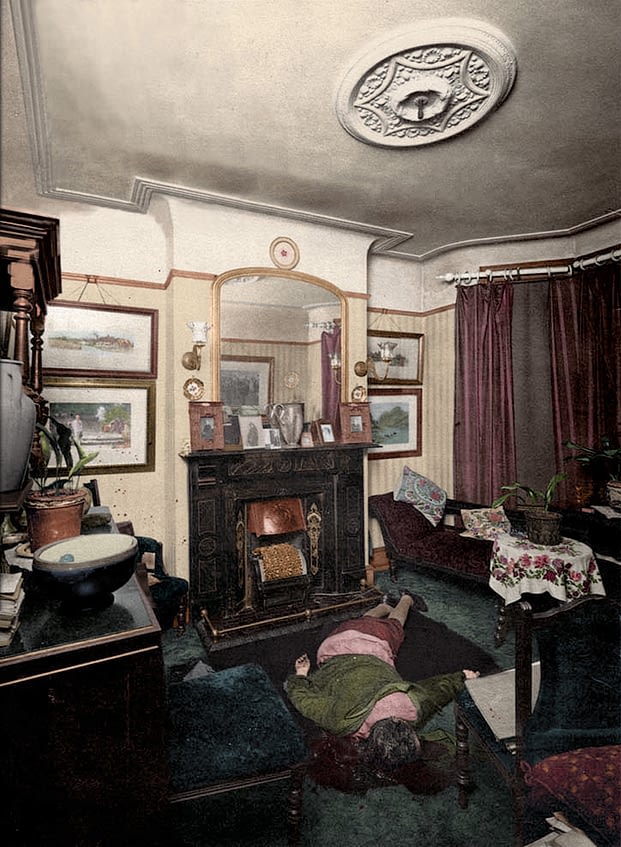
So it looked like someone had lured Wallace away and then killed his wife. The motive, presumably, was the collections money that was kept in the little house. At first it appeared that Wallace was not a suspect, that was to change.
After two weeks he was arrested and in April 1931 he was on trial for his life.
The prosecution case was that the call to the chess club was made by Wallace himself. He then attended and was given the message. On the night of the murder it was said he killed his wife and got onto the tram system. He then went looking for Menlove Gardens West making sure many people would recall him there.
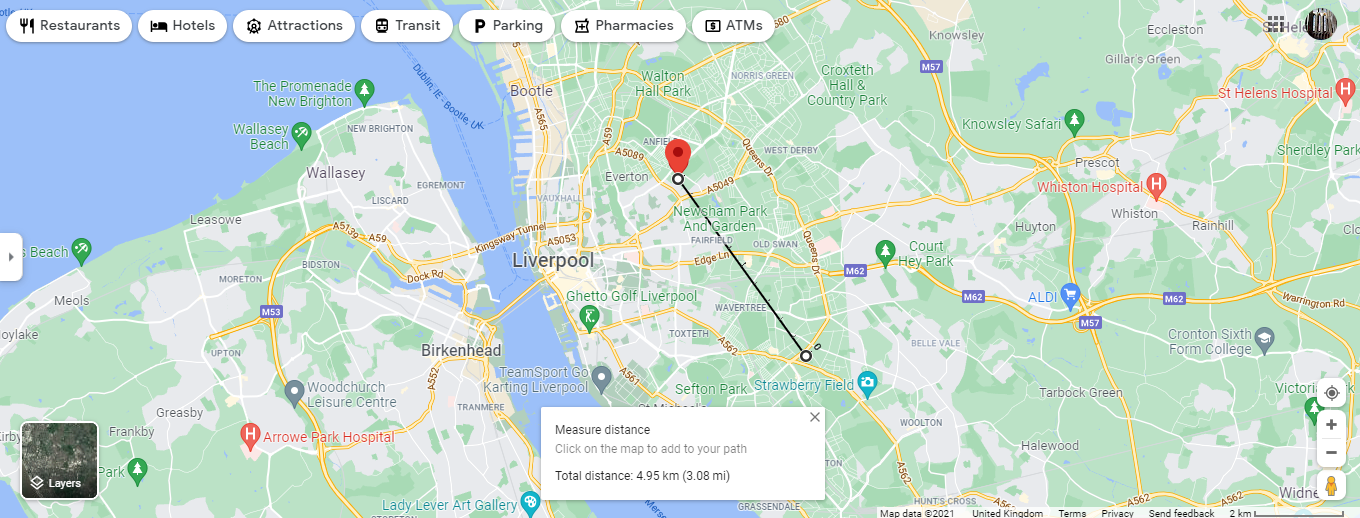
The police had run experiments where cops went from the Wolverton Street house and caught trams to place them where Wallace had been within the time frame. There were a few problems with this theory however.
A milk delivery boy believed he had seen Mrs Wallace alive and well at about the time Wallace would have been getting on the first tram. He had even chatted with her about the cold and their respective states of health. Another issue was the amount of blood that would have been splattered from the killing. It meant that the killer would have been a bit of a mess.
There was no blood on Wallace’s clothes. The police explained this by suggesting he killed his wife while naked or even wearing the Macintosh found under her body. The Macintosh was partially burned and indeed had blood on it. There was only one spot of blood found elsewhere in the house. It was on the rim of the toilet. Mrs Wallace had not just been hit once she had been struck many times. It seemed implausible that, even shrouded in a long coat, Wallace could have cleaned up his face and hands without leaving more than one spot of blood.
The unavoidable problem that the prosecution had came from the boy who had talked to Mrs Wallace. To further complicate the story of Wallace the murderer was that other people were about. Newspapers were delivered, the milk delivery boy was working with another in the street, neighbours were opening and closing their doors to these people. Not a sound was heard that suggested some violent argument or assault in number 29.
Wallace would have left the house no later than about a quarter to seven that evening. Mrs Wallace was seen alive at about twenty to seven.
There is little room for debate that reasonable doubt existed in the trial of Wallace. Fit young officers were used to simulate him killing his wife, cleaning up and heading out for the tram. Wallace was neither, he was 52 years old and had that long standing medical condition.
Too many people had seen him as he went from home to the Menlove Avenue area. Too many had seen him there at times that fitted in fully with his declaration of innocence. I can’t say that he did not kill his wife. If the lad on his milk round was wrong then it is possible this man killed Julia Wallace. However, it is highly unlikely.
Observers at the time said the main concern about Wallace being guilty came from his manner in court. He was perceived as detached and emotionless. In the end he was found guilty.
What happened next was rather remarkable. A court of appeal overturned his conviction the following month. It is worth noting that our snail paced justice system was a lot more speedy in the 1930s. You would have a trial in a week and an appeal in no time. Appeals were swift because once sentenced to death only weeks were allowed between that and falling through the trap door.
Wallace benefitted from a very keen judicial process. The conviction was quashed not because of the usual mal practice of the court but simply because it was felt the jury were wrong. It has not been said anywhere else that I can see, but it might have something to do with Wallace’s employers. The Prudential had funded the defence costs. Apparently when he was arrested they held a mock trial in London and decided that their man was innocent. When it came to the verdict, and such a hasty appeal in his favour, I wonder if the wheels of the upper levels had spun rapidly. Wallace might have been a humble collector, but the Prudential was a very big deal.
William Wallace died less than two years later from the illness he had been dodging for a quarter of a century. After his release he had resumed his duties. Many did not believe in his innocence and a job like his requires a good rapport with clients at a community level. He had a clerical job in the city and moved to another part of what is now Merseyside.
The reason I believe this case is tragic and brutal yet classically intriguing is because of the detail of the facts. I have barely scratched the surface of the intense analysis of William Wallace’s movements. Umpteen witnesses were called who saw him on his travels. These included a postal worker, tram drivers, people he knew, many he didn’t and a newsagent.
If looked at one way you had a man trying outrageously to nail an alibi down by gathering in people who could place him away from the scene of the crime. Looked at another way you had a man who was a slave to punctuality anxiously trying to find a client and make a living. As with the case of Belle Wright all the timings depended on what people observed which is always a dodgy chain of evidence if you ask me.
The cops that tried to prove Wallace had time to kill his wife and make his appearance on the route were known to have jumped on moving trams. They were also known to have run along at speed to catch them. Rightly it was suggested that Wallace would not have been able to do this.
The murder of Julia was either the work of her husband or the work of a thief. £4 was missing from that collection box which had its home in the kitchen. Wallace had worked with others over the years. One of them was a young man who developed a less than professional view of the Prudential’s takings.
With painstaking enquiries various journalists have tried to pull together the threads of this mystery. Most of the more recent work is off the foundations laid by a guy called Jonathan Goodman in the 1960s though an honourable mention should go to another called Roger Wilkes.
The theory has developed that a man called Richard Gordon Parry was responsible for the crime. Parry in some accounts had been dipping into the weekly collections and Wallace had found out. Some say Wallace found out and reported Parry, others say he found out yet did not report him.
It looks likely that it was Parry more because of the testimony of a garage employee however. He claims Parry used a hose to clean his car later on that night of 20th January. He also claims he saw a glove soaked in blood in that car. Parry would have known Wallace’s routine and even where the money box was kept. He also would have been known to Julia Wallace and she might well have let him in.
I have given the details in brief. The overall case against him is circumstantial but strong. That could never be said for the evidence levelled at William Wallace.
A few things do bother me about the innocence of Wallace however. Just a feeling. I am sure he did not kill his wife. I can’t quite let go of the sense there was more to it than a simple case of total innocence versus total guilty. Maybe I will go over it all again. It has been years since I read a full account. Meanwhile you might like to do some research yourself. The timeline combined with Google maps will keep you engaged for hours.
A rather excellent source can be found online. The Julia Wallace Murder Foundation is a website full of statements and evidence analysis. I recommend you turn your Holmes senses to that.
Tim
tim@reasonedcrimechronicle.com
https://en.wikipedia.org/wiki/William_Herbert_Wallace#The_crime
